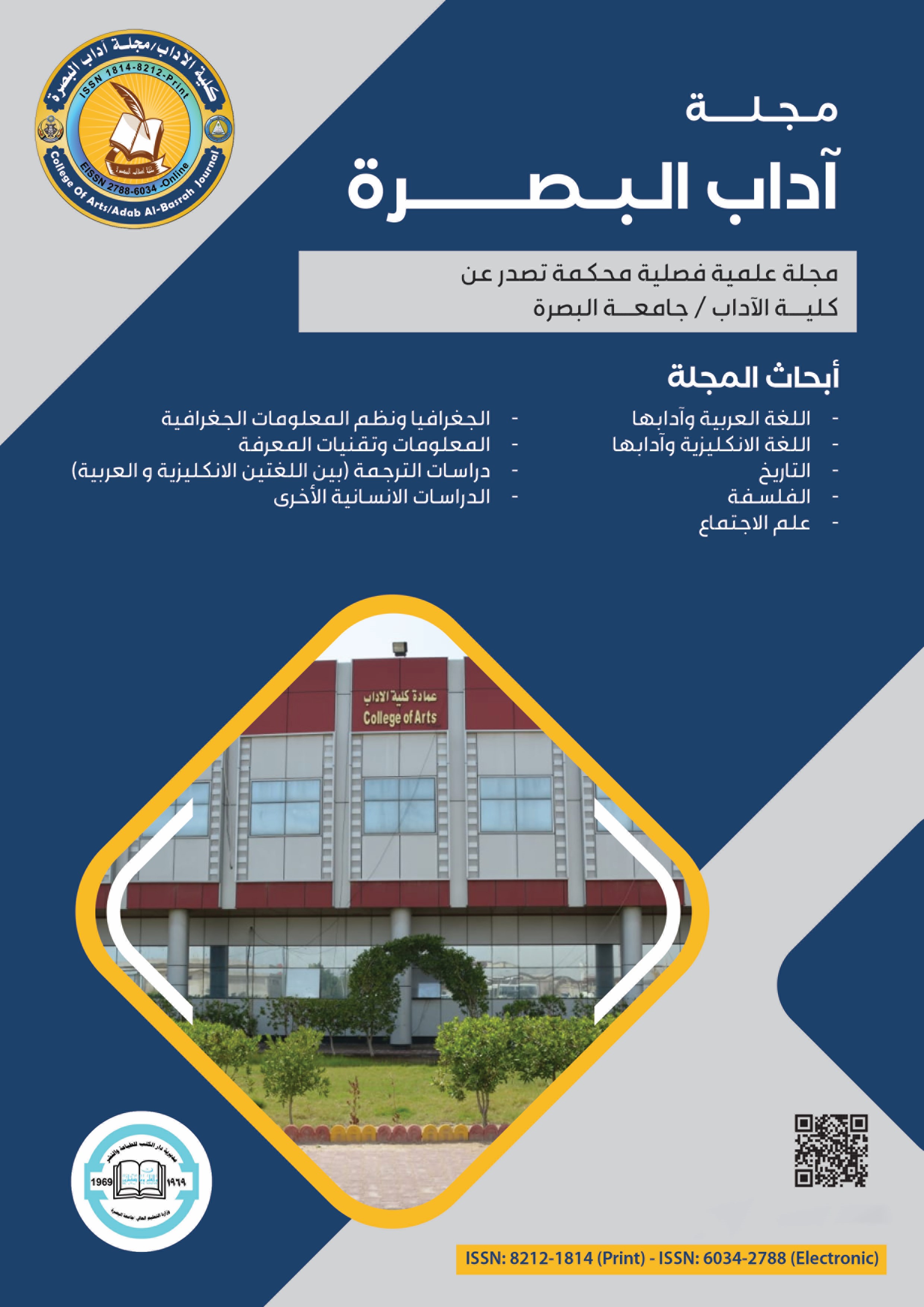Abstract
Arab scholars paid attention to the study of time and its connotations, in the past and present, in a striking way, as this time and its connotations constitute one of the most important axes of the Arab lesson. So, this study focused on the merits of this topic for consideration, and the possibility of applying this to a literary text with distinction, which is the three texts of the novelist (Naguib Mahfouz), so his novel was the scientific brush to apply the theoretical material drawn from grammar books and others.
This research has dealt with the temporal significance in light of the evidence available in the context of the texts of the novel. It should be noted that the term “context” was not known to advanced grammarians as a grammatical or linguistic term. Rather, they objected to it in terms close to or synonymous with its lexical meaning, including the verse, the link, the evidence, the emirate and the connotation.
The research in Naguib Mahfouz’s novel trilogy has focused on two types of clues: the first is verbal clues that include: verbatim and circumstantial clues, and the second is the moral clues that relate to the context of the case for various reasons, including the frequent occurrence of these clues in the trilogy in the context of the past tense, with what it has the effect of transforming and altering the temporal significance of the past verb, so these clues had the most prominent role in deducing the grammatical time connotation. Even these clues formed a special chronological feature in the trilogy, as these clues play a role in showing the intention of the speaker in the context in which they are employed.
This research has dealt with the temporal significance in light of the evidence available in the context of the texts of the novel. It should be noted that the term “context” was not known to advanced grammarians as a grammatical or linguistic term. Rather, they objected to it in terms close to or synonymous with its lexical meaning, including the verse, the link, the evidence, the emirate and the connotation.
The research in Naguib Mahfouz’s novel trilogy has focused on two types of clues: the first is verbal clues that include: verbatim and circumstantial clues, and the second is the moral clues that relate to the context of the case for various reasons, including the frequent occurrence of these clues in the trilogy in the context of the past tense, with what it has the effect of transforming and altering the temporal significance of the past verb, so these clues had the most prominent role in deducing the grammatical time connotation. Even these clues formed a special chronological feature in the trilogy, as these clues play a role in showing the intention of the speaker in the context in which they are employed.
Keywords
addition
Doubling
Heavy and Light Letters
Lighting
linguistic phenomena
Reduction.
Abstract
اعتنى العلماء العرب بدراسة الزمن ودلالاتهِ قديمًا وحديثًا بشكل لافت للانتباه لمّا يُشكله هذا الزمن ودلالاته أحد أهم محاور الدرس العربي، لذا وقفت هذه الدراسة على حيثيات هذا الموضوع للنظر فيه، وإمكانية تطبيق ذلك على نصٍّ أدبيٍّ بامتياز وهي نصوص ثلاثية الروائي (نجيب محفوظ) فكانت روايته الفرشة العلمية لتطبيق المادة النظرية المستقاة من كتب النحو وغيرها .
وقد تناول هذا البحث الدلالة الزمنية في ضوء ما توفر من قرائن في سياق نصوص الرواية ، وتجدر الاشارة الى أن مصطلح "القرينة" لم يعرف عند النحويين المتقدمين بوصفه مصطلحًا نحويًّا أو لُغويًّا؛ بل أنهم اعتاضوا عنه بمصطلحات قريبة أو مُرادفة لمعناه المُعجميّ، منها: الآية والرابط والدليل والإمارة والدّلالة.
وقد وقف البحث في الثلاثية الروائية لنجيب محفوظ عند نوعين من القرائن الأول: القرائن اللفظية التي تضم : القرائن الحرفية ، والقرائن الظرفية , والثاني: القرائن المعنوية التي تتعلق بسياق الحال لأسباب متعدّدة منها: كثرة ورود هذه القرائن في الثلاثية في سياق الفعل الماضي، مع ما لها من أثر في تحويل وتحوير الدلالة الزمنية للفعل الماضي، لذا قد كان لهذه القرائن الدور الأبرز في استنباط دلالة الزمن النحويِّ؛ حتى شكلت هذه القرائن ملمحًا زمنيًّا خاصا في الثلاثية ، لما لهذه القرائن من دور في بيان قصدية المتكلم في السياق الذي وُظفت به.
وقد تناول هذا البحث الدلالة الزمنية في ضوء ما توفر من قرائن في سياق نصوص الرواية ، وتجدر الاشارة الى أن مصطلح "القرينة" لم يعرف عند النحويين المتقدمين بوصفه مصطلحًا نحويًّا أو لُغويًّا؛ بل أنهم اعتاضوا عنه بمصطلحات قريبة أو مُرادفة لمعناه المُعجميّ، منها: الآية والرابط والدليل والإمارة والدّلالة.
وقد وقف البحث في الثلاثية الروائية لنجيب محفوظ عند نوعين من القرائن الأول: القرائن اللفظية التي تضم : القرائن الحرفية ، والقرائن الظرفية , والثاني: القرائن المعنوية التي تتعلق بسياق الحال لأسباب متعدّدة منها: كثرة ورود هذه القرائن في الثلاثية في سياق الفعل الماضي، مع ما لها من أثر في تحويل وتحوير الدلالة الزمنية للفعل الماضي، لذا قد كان لهذه القرائن الدور الأبرز في استنباط دلالة الزمن النحويِّ؛ حتى شكلت هذه القرائن ملمحًا زمنيًّا خاصا في الثلاثية ، لما لهذه القرائن من دور في بيان قصدية المتكلم في السياق الذي وُظفت به.
Keywords
التشديد والتخفيف - الظواهر اللغوية - الاستثقال والاستخفاف - التخفيف في القراءة القرآنية - التشديد في القراءة القرآنية - الزيادة والنقص في الكلمات
